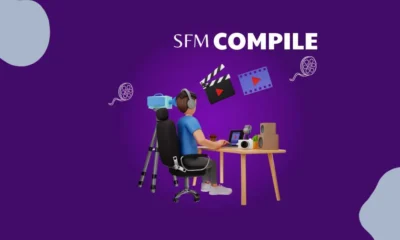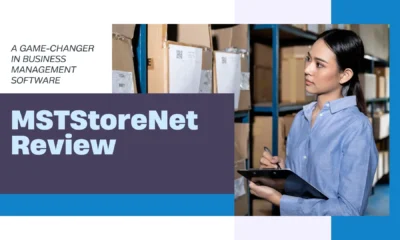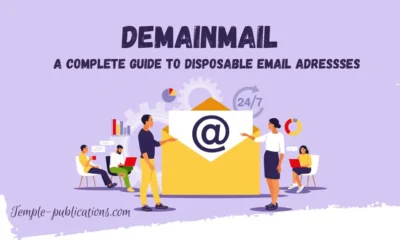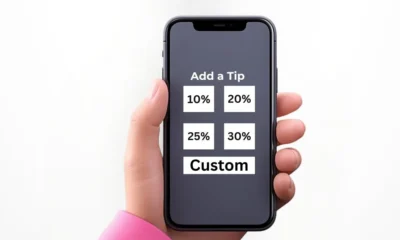GENERAL
Background Information: A Key to Understanding Any Topic

Background information serves as the foundation for understanding any subject, providing essential details, context, and historical insights. Readers gain an understanding of the importance of central topics before experts analyze them in detail. The formation of informed opinions heavily relies on background information across all academic fields along with journalism and business contexts as well as ordinary discussions. The content connects abstract matters to significant concerns by delivering suitable explanations and definitions in addition to valuable information. Lack of basic information prevents deep conversations and organized examination from taking place. Researchers and students along with professionals need to master it acquisition and presentation methods. It is an ultimate program to find any type of information easily.
Role in Research and Writing
The foundation of academic work depends on background information because it creates necessary context for main discussions. The introduction supplies fundamental concepts together with historical events and research findings to help readers understand the subject’s importance. A climate change research paper must provide information about greenhouse gases together with industrial emissions as well as the historical record of global warming trends. When readers lack adequate overview they might experience confusion about the main points being presented. The inclusion of it establishes credibility for writers by showing their deep grasp of the entire subject. Academic authors use scholarly articles as well as books and reliable sources to obtain required information. A properly designed background section will improve the entire narrative while better presenting complicated information to readers.
Types of Background Information
Background information can be categorized into several key types, each contributing to a deeper understanding of a subject.
- Historical Context: Examines past events, developments, and influences shaping the present topic. Understanding history provides insight into why certain issues exist today.
- Theoretical Framework: Covers theories and models relevant to the subject, helping readers grasp its conceptual foundations and academic significance.
- Statistical Data: Provides numerical insights, trends, and factual evidence, supporting claims with concrete figures from credible sources like research studies.
- Key Figures & Contributors: Introduces influential individuals, researchers, or organizations who have contributed to advancements in the field.
- Previous Research & Studies: Summarizes existing literature and findings, highlighting knowledge gaps and areas requiring further exploration.
How to Gather Information
An individual can obtain trustworthy background information from books along with academic journals along with government reports and respected websites. Users can access peer-reviewed research through three search engines and databases including Google Scholar as well as PubMed and JSTOR. Professional expert interviews along with surveys and direct observations produce important developmental knowledge. The verification of facts remains vital because incorrect information produces inaccurate findings. The differentiation between primary and secondary sources needs proper attention. Original records along with firsthand testimonies serve as primary evidence but textbook information and academic papers function as secondary evidence by interpreting existing documents. When researchers utilize sources that are correctly documented their arguments gain more strength while logical reasoning receives better support.
The Importance of Background Information in Academic Writing
Academic writing uses background information to create well-structured arguments through putting things in context. The first part of the paper establishes vital information needed to understand the thesis statement. Research papers lose their ethical validity when writers fail to establish sufficient it to readers. The essay about artificial intelligence needs to include historical development of AI as well as important milestones and moral implications within its framework. It provides tools for writers to separate different views thus allowing them to deliver properly balanced arguments. The usage it stops misunderstandings through the definition of complex terminology and specialized concepts. Relevant it that academic writers include in their work increases both the readability along with credibility and impact of their academic writing.
In Business and Marketing
Businesses and marketers heavily depend on background information to study market patterns while comprehending customer conducts patterns and facing key industry competitors. Market research forms an essential element of product launch planning since firms examine both market demand and customer preferences along with price strategies. Exploring rival business operations and strategies through competitor analysis needs adequate background information to fulfill its requirements. The analysis of economic trends along with technological developments assists companies with their decision processes for both present choices and future strategies. Businesses extract significant insights by evaluating financial reports together with case studies and analyzing data through analytics. A company that lacks adequate background knowledge may struggle with market positioning and branding. Thus, it is a key driver of business success and strategic growth.
Background Information in Different Fields
Background information plays a crucial role across various disciplines, ensuring clarity and depth in discussions and research.
- Science & Technology: Provides foundational knowledge on scientific principles, discoveries, and technological advancements shaping modern innovations.
- Law & Politics: Covers legal precedents, policy changes, and governmental history to offer a well-informed perspective on legal and political matters.
- Healthcare & Medicine: Explores medical research, breakthroughs, and historical developments to enhance understanding of diseases, treatments, and healthcare policies.
- Arts & Culture: Examines artistic movements, cultural traditions, and historical influences that shape creative expressions in literature, music, and visual arts.
- Education & Psychology: Investigates learning theories, cognitive development, and psychological studies that contribute to educational advancements and mental health awareness.
In Journalism and Media
The media relies on background information for delivering essential contextual details to publishing news stories and reports. The foundation of an expert-produced news article rests upon historical elements fused with specialist feedback combined with concrete statistical evidence to build a complete understanding of the matter at hand. A political crisis report needs to include information about past relationships and events which have contributed to the current state. It also helps in investigative journalism, where journalists uncover hidden details by connecting past occurrences with present developments. Ethical journalism requires accuracy and objectivity, making fact-checking an essential part of background research. Without proper Background Information, news stories risk being misleading or incomplete.
Challenges and Practices for Writing Background Information
While background information is essential, gathering accurate and relevant details presents certain challenges. One major issue is identifying reliable sources amid vast amounts of information available online. Many websites publish biased or misleading content, requiring careful evaluation of credibility. Another challenge is avoiding information overload, as excessive details can overshadow key points and reduce readability. Writing effective background information requires clarity, conciseness, and logical structure. The document should stay focused on its subject without adding additional information which diverts attention from main points. Properly organizing background material into separate sections creates easier-to-read and understand content. Using proper citations remains essential because it protects credibility through verification of information while stopping plagiarism. A combination of depth with simplicity helps readers grasp complicated subjects while avoiding confusion..
Conclusion: The Lasting
Background information is an indispensable tool for understanding any topic, shaping informed discussions, and enhancing research quality. It provides essential context, historical insights, and foundational knowledge that strengthen arguments and improve decision-making. In fields such as academia, business, journalism, and science, it plays a critical role in forming well-rounded perspectives. Despite challenges in gathering reliable information, using credible sources and fact-checking ensures accuracy. Whether in research papers, news articles, or business strategies, it remains a key element in presenting clear, factual, and meaningful content. Emphasizing its importance fosters a culture of knowledge-driven analysis and intellectual growth.
-

 BIOGRAPHY7 months ago
BIOGRAPHY7 months agoBehind the Scenes with Sandra Orlow: An Exclusive Interview
-

 HOME1 year ago
HOME1 year agoDiscovering Insights: A Deep Dive into the //vital-mag.net blog
-

 HOME1 year ago
HOME1 year agoSifangds in Action: Real-Life Applications and Success Stories
-

 BIOGRAPHY1 year ago
BIOGRAPHY1 year agoThe Woman Behind the Comedian: Meet Andrew Santino Wife




























